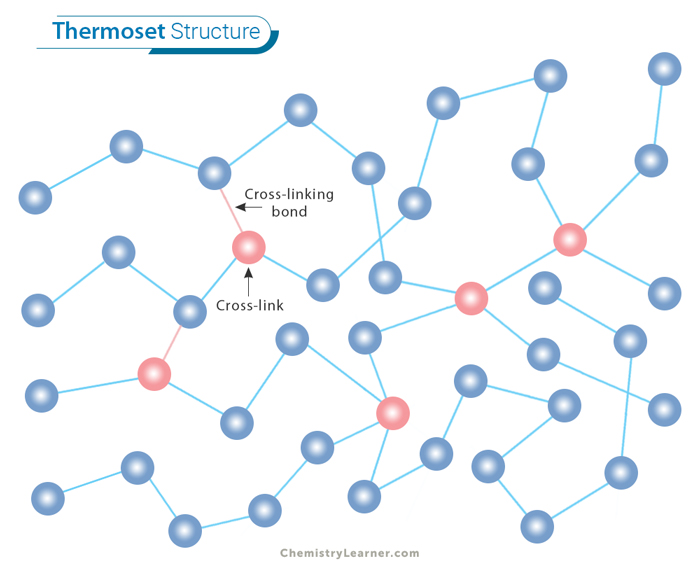Elastomer
Elastomers are a type of polymer that exhibits elastic behavior, meaning they can return to their original shape after being stretched or deformed. Elastomers are known for their flexibility and resilience. They can withstand repeated stretching and compressing without losing their shape or integrity, making them ideal for applications where rubber-like materials are required. [1-4]
Types of Elastomers
Elastomers are categorized into unsaturated and saturated, each boasting distinct properties and applications. [1,2]
Unsaturated Elastomers
Unsaturated elastomers, characterized by double bonds in their polymer chains, offer exceptional elasticity and resilience. Natural rubber, derived from the latex of rubber trees, stands as one of the most iconic unsaturated elastomers. Its unique molecular structure, predominantly composed of polyisoprene units with double bonds, enables efficient cross-linking during vulcanization. Synthetic counterparts like polybutadiene and polyisoprene further extend the realm of unsaturated elastomers, offering tailored properties for specific applications. For instance, polybutadiene’s high resilience and tear resistance make it ideal for tire manufacturing, where durability and traction are paramount.
Saturated Elastomers
In contrast, saturated elastomers, lacking double bonds in their polymer chains, excel in stability and resistance to degradation. Silicone rubber epitomizes this category and is renowned for its exceptional thermal stability, electrical insulation, and biocompatibility. Its silicone-oxygen backbone imparts remarkable heat, ozone, and UV radiation resistance, rendering it invaluable in automotive gaskets, medical devices, and electrical insulation. Fluorocarbon elastomers, typified by Viton®, represent another subset of saturated elastomers prized for their unparalleled chemical resistance and resilience in aggressive environments. These elastomers are found to be extensively used in aerospace seals, oil and gas applications, and chemical processing equipment, where exposure to harsh chemicals and extreme conditions necessitates robust material performance.
Properties of Elastomers
The properties of elastomers play a pivotal role in determining their suitability for various applications. Here are some properties serving as critical metrics in assessing their performance: [1-3]
Hardness
Hardness indicates an elastomer’s resistance to indentation or deformation under applied pressure. Elastomers with higher hardness values exhibit greater resistance to compression but may sacrifice flexibility. For instance, silicone elastomers typically boast lower hardness, offering softer, more pliable characteristics suitable for applications requiring conformability and sealing, while harder elastomers like polyurethane find use in load-bearing components where rigidity and durability are paramount.
Elongation at Break
Elongation at break, a measure of the material’s ability to stretch before rupture, reflects its flexibility and resilience. Elastomers with high elongation at break values can undergo substantial deformation without failure, making them ideal for repetitive stretching or dynamic loading applications. Natural rubber and synthetic elastomers like polyurethane often exhibit impressive elongation at break, enabling them to endure extensive stretching cycles without compromising performance. This property is particularly crucial in seals, gaskets, and flexible couplings, where the material must accommodate movement while maintaining integrity.
Abrasion Resistance
Abrasion resistance measures an elastomer’s ability to withstand surface wear and erosion caused by frictional forces. The polymer’s molecular structure, filler content, and surface finish influence its abrasion resistance. Reinforcing fillers like carbon black or silica enhance the elastomer’s resistance to abrasion by reinforcing the polymer matrix and dissipating mechanical energy. For instance, nitrile rubber, renowned for its excellent abrasion resistance, finds widespread use in industrial hoses, conveyor belts, and automotive seals subjected to high-wear environments.
Tear Resistance
Tear resistance evaluates the material’s resistance to tearing or propagation of cracks under applied stress. Elastomers with high tear resistance exhibit resilience against punctures, cuts, and tearing, ensuring long-term durability and reliability. Vulcanization, a process that cross-links polymer chains, enhances tear resistance by creating a robust network of molecular bonds. Elastomers like ethylene-propylene-diene monomer (EPDM) and neoprene demonstrate superior tear resistance, making them indispensable in roofing membranes, cable insulation, and protective clothing, where resistance to tearing and puncturing is paramount.
Thermal Properties
Thermal properties, particularly heat resistance, are crucial in determining an elastomer’s performance in applications subjected to elevated temperatures. Silicone elastomers, renowned for their exceptional thermal stability, can withstand temperatures ranging from -60°C to over 200°C without losing their mechanical properties. This inherent resistance to heat degradation makes silicone elastomers ideal for high-temperature sealing applications in automotive engines, aerospace components, and industrial ovens. Additionally, fluorocarbon elastomers, such as Viton®, exhibit outstanding heat resistance, maintaining their integrity and sealing capabilities in extreme environments where temperatures surpass 200°C, such as in chemical processing equipment and oil and gas applications.
Chemical Resistance
Chemical resistance is another critical property of elastomers, ensuring their resilience in various chemicals, acids, and solvents. Nitrile rubber, known for its excellent oil and fuel resistance, finds widespread use in automotive seals, gaskets, and hoses exposed to petroleum-based fluids. Similarly, fluorocarbon elastomers resist a broad spectrum of chemicals, including acids, bases, and organic solvents, making them indispensable in chemical processing, pharmaceutical manufacturing, and semiconductor industries. EPDM (ethylene propylene diene monomer) rubber, prized for its exceptional resistance to weathering, ozone, and UV radiation, also exhibits good resistance to a wide range of chemicals, making it suitable for outdoor applications like roofing membranes, automotive weatherstripping, and marine seals.
Examples of Elastomers [1,2]
1. Silicone rubber, known for its flexibility and resistance to extreme temperatures, is commonly used in kitchen utensils like baking mats and oven mitts. Due to its durability and non-reactive properties, silicone rubber also finds applications in gaskets, seals, and insulation in the industrial sector.
2. Neoprene rubber is popularly used in wetsuits for its water-resistant properties. Due to its oil resistance, it also serves in automotive applications such as hoses and belts. Additionally, neoprene is utilized in laptop sleeves for its cushioning abilities.
3. Due to its excellent air retention properties, butyl rubber is widely employed in tire inner tubes. Its impermeability makes it suitable for pharmaceutical stoppers and seals. Furthermore, butyl rubber’s resistance to chemicals makes it ideal for use in protective gloves.
4. Polyurethane’s versatility finds extensive industrial applications in coatings, adhesives, and sealants due to its durability and abrasion resistance. It is favored for its impact strength and weather resistance properties in the construction and automotive manufacturing industries.






I need catalog Elatomer with asbestos fabric insertion